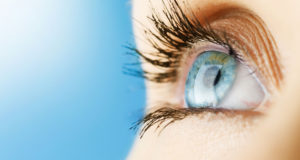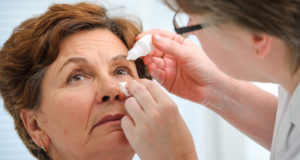Your eyes are one of your most important assets; once you lose your vision, you can’t get it back. Glaucoma affects nerves connecting to your eye, resulting in vision loss and blindness. Regular screening and early treatment for the disease can protect your eyes from irreversible damage.
Glaucoma is a debilitating condition that can affect anyone, so ophthalmologists recommend regular detection tests. However, many factors make some people more at risk than others. It is vital to understand what those risks are and how to address them. Are you at risk for glaucoma?
Age
Glaucoma can form at any time, but individuals aged 60 years or older have the highest risk for developing the disease. It’s common to develop high pressure throughout your forties and fifties; any rise in ocular pressure will increase your risk of developing glaucoma.
Family History
Glaucoma appears to be hereditary. If you have a family member diagnosed with the disease, you have an increased risk of developing it. Hereditary factors do not guarantee the development of glaucoma, but you should take steps to proactively monitor your eye health.
High Intraocular Pressure (IOP)
IOP is the amount of pressure created by fluid in the eye. The ciliary body, which connects the iris to other parts of the eye, creates a clear fluid and fills the area between the cornea and the iris. Healthy eye function includes periodic fluid drainage as well. If the production and drainage process is off balance, the result is often ocular hypertension (high pressure within the eye).
Some medications put you at higher risk for IOP. Steroids used to treat asthma, and other conditions can increase the risk of IOP and glaucoma. If you take any kind of steroid-based medicine, including eye drops, consult your eye doctor for an IOP screening.
Ethnicity
Anyone of Latino, African, or Asian descent has a greater risk of developing glaucoma. Latinos and Africans Americans are more at risk for primary open-angle glaucoma. This is the most common type of glaucoma, caused by gradual IOP elevation. The eye adjusts without swelling, which leaves no warning signs or immediate symptoms, making regular glaucoma checks essential.
People of Asian descent have a higher risk for normal-tension and angle-closure glaucoma. Normal tension glaucoma can occur even when IOP is low, yet the optic nerve gets damaged from slightly increased pressure.
The reason optic nerve damage develops in these cases is not fully understood. Due to lack of warning signs, this type of glaucoma is not usually diagnosed until damage has already occurred. Regular screenings are strongly recommended because of the difficulty of diagnosis. In contrast, angle-closure glaucoma develops from a sudden increase in IOP and causes notable symptoms, which helps promote early detection.
Others at Risk
There are others who may have an increased risk of developing glaucoma, and they include people with:
- Diabetes
- Myopia (nearsightedness)
- Past eye injury
- Very low or high blood pressure.




